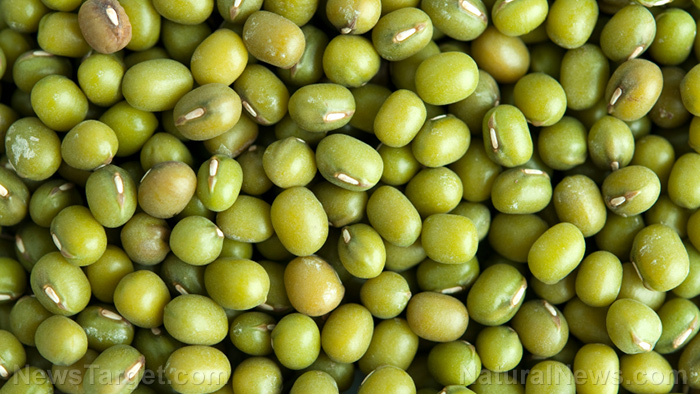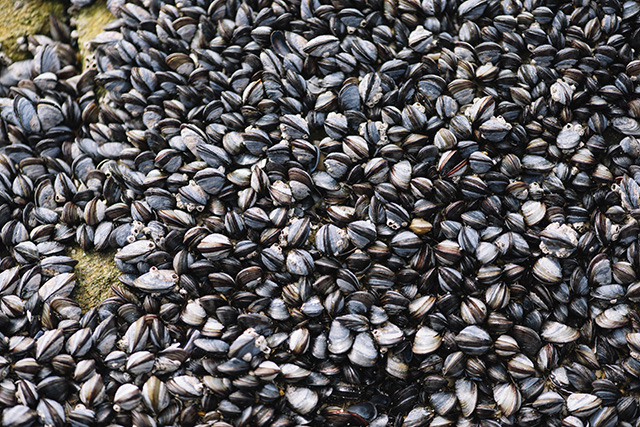Mung beans offer a natural alternative for increasing organic carbon in soils for crops
06/12/2019 / By Ralph Flores

A recent study supported by the Indian Council of Agricultural Research found that mung beans (Vigna radiata) could be used to improve crop yield in certain crop rotation systems. This finding, which appeared in the Archives of Agronomy and Soil Science, revealed that the legume, when used as a soil amendment, can boost soil organic carbon levels in cereal-cereal cropping systems, ensuring sustainable yields.
Soil organic carbon is the measurable component of soil organic matter — that is, organic compounds like carbon, hydrogen, and oxygen, as well as other trace elements like nitrogen, sulfur, and magnesium. Organic matter plays an important role in the retention of nutrients in the soil and in the degradation of pollutants. Soil organic matter accounts for up to 10 percent of total soil mass and contributes to the physical, chemical, and biological function of agricultural soils.
To improve the levels of soil organic carbon, researchers explored the use of plant residues. They posited that mung beans could be beneficial amendments to crop rotation systems. An earlier study published in Scientia Agricola reported that using legume residues led to an increase in condensation of humic acids in the soil, indicating soil organic matter management.
Mung beans can boost soil organic carbon levels in cereal-cereal cropping systems
Mung bean residues have been investigated for their ability to positively affect crop yield and soil health. An article published in the Journal of Plant Nutrition found that adding mung bean residues in a sorghum/mung bean-lentil system improved soil organic matter content, in particular, organic carbon, soil nitrogen, and phosphorus. In the current study, the team observed that mung beans, when used in long-term inclusions, can improve soil carbon pools, particulate organic carbon, and carbon stabilization in both lowland rice-wheat and upland maize-wheat systems.
The researchers also reported that mung bean inclusion caused noticeable increases in both very labile and labile carbon in surface soil. Labile carbon is a portion of soil organic carbon that is available for organisms to decompose, making it an important indicator of soil health. Labile carbon is also vital to farm productivity as it improves soil structure and water retention. These improvements were seen in both upland and lowland crop rotations after mung bean inclusion.
Mung bean treatment also increased particulate organic carbon — one of the most easily decomposable fractions of soil organic matter — in cereal crop systems, especially those planted in the lowland. In terms of carbon storage and release (carbon pool system), researchers found that rice-based systems in the lowland had a higher passive carbon pool than maize systems. This demonstrated the influence of rice ecology in stabilizing the passive carbon pool, which is stored in the soil longer.
Mung beans — when combined with organic nutrients like farmyard manure, full crop residues, and biofertilizers — can positively affect the soil’s carbon management index, a measurement that uses total soil organic carbon and labile carbon to determine how well a system promotes soil quality. This was also seen in both upland and lowland crops.
Finally, the researchers found that adding mung beans boosted grain yield for cereal crops, with maize benefiting the most, followed by rice, and wheat (both upland and lowland). (Related: Plant diversity improves crop health and yields compared to monoculture.)
“The inclusion of summer mungbean in cereal-cereal cropping systems could be a long-term strategy to enrich soil organic [carbon] and to ensure [the] sustainability of cereal-cereal cropping systems,” the researchers wrote in their report.
Follow Harvest.news to learn more about natural soil amendments aside from mung beans.
Sources include:
Tagged Under: agriculture, carbon, Carbon management index, carbon stabilization, Ecology, farming, functional food, grain yield, green living, harvest, legumes, minerals, mung beans, organic carbon, research, soil amendments, soil health, soil nutrients, soil quality
RECENT NEWS & ARTICLES
COPYRIGHT © 2017 ECOLOGY NEWS



















